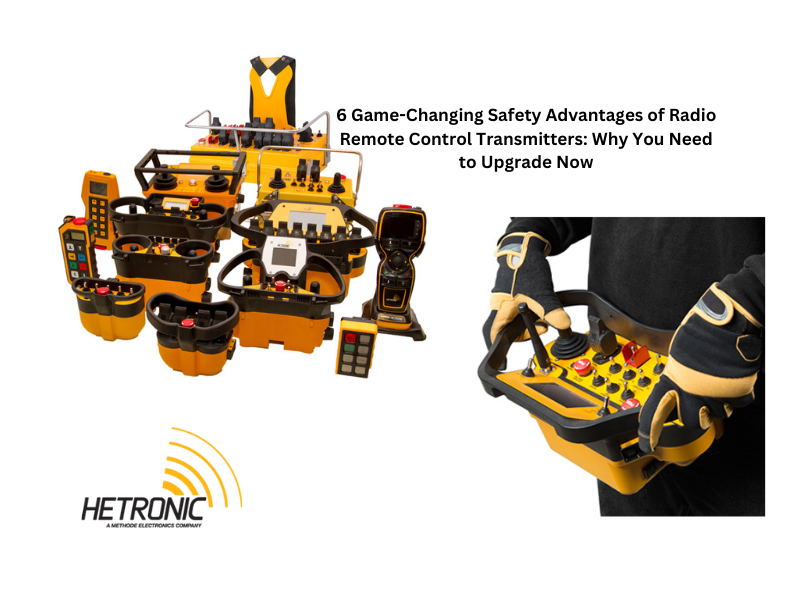In an era where environmental consciousness is paramount, industries are constantly seeking innovative ways to reduce their ecological footprint. One such innovation that’s making waves in the construction and manufacturing sectors is the use of radio remote controls for cranes. These small devices are not just improving efficiency and safety; they’re also contributing significantly to environmental conservation. Let’s dive into the seven key environmental benefits of using radio remote controls for cranes and discover how this technology is shaping a greener future for heavy machinery operations.
Introduction – Benefits of Using Radio Remote Controls for Cranes
Cranes are the backbone of many industries, from construction to shipping. However, traditional crane operations have long been associated with high energy consumption, noise pollution, and significant carbon emissions. Enter radio remote controls – a game-changing technology that’s not only enhancing operational efficiency but also offering substantial environmental benefits.
As we explore these benefits, we’ll see how this seemingly simple technology is addressing some of the most pressing environmental concerns in industrial operations. From reducing fuel consumption to minimizing habitat disruption, radio remote controls are proving to be an unexpected ally in the fight against climate change and environmental degradation.
The 7 Environmental Benefits of Using Radio Remote Controls for Cranes
1. Reduced Fuel Consumption and Emissions
One of the most significant environmental impacts of crane operations is the fuel consumption and resulting emissions. Traditional crane operations often require the crane to be running continuously, even when not actively lifting or moving loads. This leads to unnecessary fuel burn and increased carbon emissions.
Radio remote controls allow operators to manage cranes from a distance, enabling them to shut down the engine when the crane is not in use. This results in:
– Lower fuel consumption
– Reduced carbon emissions
– Decreased overall environmental impact
According to a study by the International Journal of Environmental Science and Technology, implementing remote-controlled cranes can lead to a 20-30% reduction in fuel consumption compared to traditional operations. This translates to a substantial decrease in greenhouse gas emissions, contributing to cleaner air and reduced climate impact.
2. Minimized Noise Pollution
Noise pollution is a often-overlooked environmental issue that can have severe impacts on both wildlife and human health. Traditional crane operations are notorious for generating high levels of noise, which can disrupt local ecosystems and cause stress to nearby communities.
Radio remote controls allow for more precise and efficient crane movements, resulting in:
– Quieter operations
– Reduced duration of noisy activities
– Less disturbance to surrounding areas
By enabling operators to control cranes from a distance, these devices eliminate the need for loud verbal communications or signaling systems. This can lead to a reduction in noise levels by up to 15 decibels, according to a report by the European Agency for Safety and Health at Work.
3. Enhanced Energy Efficiency
Energy efficiency is a crucial factor in reducing the environmental impact of any industrial operation. Radio remote controls contribute to improved energy efficiency in several ways:
– Optimized movement patterns: Operators can plan and execute more efficient crane movements, reducing unnecessary energy expenditure.
– Precise load control: Better control over lifting and lowering speeds results in less energy wasted on corrective movements.
– Reduced idle time: The ability to quickly start and stop crane operations minimizes energy consumption during non-productive periods.
A case study by the Journal of Construction Engineering and Management found that remote-controlled cranes demonstrated up to 15% higher energy efficiency compared to traditional manually operated cranes.
4. Decreased Land Disturbance
Construction and industrial sites often require significant land clearing and preparation to accommodate crane operations. This can lead to habitat destruction and soil erosion, which have long-lasting environmental impacts.
Radio remote controls allow for:
– Smaller operational footprints
– Reduced need for extensive ground preparation
– Minimized soil compaction
By enabling operators to control cranes from a distance, these devices eliminate the need for large operator cabins and extensive support structures. This can result in up to 30% less land disturbance on construction sites, according to a report by the Environmental Protection Agency.
5. Improved Resource Management
Efficient resource management is key to reducing waste and minimizing environmental impact. Radio remote controls contribute to better resource management in several ways:
– Precise material handling: Operators can place materials exactly where needed, reducing waste from misplacement or damage.
– Optimized load distribution: Better control allows for more efficient use of space and materials.
– Reduced material spillage: Improved control minimizes the risk of accidental spills or drops.
A study published in the Journal of Cleaner Production found that implementing remote-controlled cranes led to a 10-15% reduction in material waste on construction sites.
6. Extended Equipment Lifespan
The longevity of equipment has a direct impact on environmental sustainability. Longer-lasting machinery means less frequent replacements, reduced manufacturing demands, and lower resource consumption.
Radio remote controls contribute to extended equipment lifespan by:
– Reducing wear and tear through smoother operations
– Minimizing the risk of accidents that could damage equipment
– Allowing for more precise maintenance scheduling
According to data from the Construction Equipment Association, cranes equipped with radio remote controls have shown a 20-25% increase in operational lifespan compared to traditional models.
7. Facilitation of Eco-Friendly Construction Practices
Finally, radio remote controls are enabling the adoption of more environmentally friendly construction practices. By providing enhanced control and precision, these devices support:
– Green building techniques that require precise material placement
– The use of sustainable materials that may require more careful handling
– Implementation of energy-efficient construction methods
A report by the Green Building Council found that construction projects using remote-controlled cranes were 30% more likely to achieve high sustainability ratings.
Conclusion – Benefits of Using Radio Remote Controls for Cranes
The adoption of radio remote controls for cranes is more than just a technological upgrade; it’s a significant step towards more sustainable industrial practices. From reducing emissions and noise pollution to enabling more efficient resource management and eco-friendly construction techniques, these devices are proving to be invaluable tools in the quest for environmental conservation.
As we continue to face the challenges of climate change and environmental degradation, innovations like radio remote controls demonstrate that even small changes in how we operate machinery can lead to substantial positive impacts. By embracing this technology, industries are not only improving their operational efficiency but also contributing to a cleaner, greener future.
The environmental benefits of radio remote controls for cranes extend far beyond the construction site. They represent a shift towards more responsible industrial practices that prioritize both productivity and ecological preservation. As this technology continues to evolve and become more widespread, we can look forward to even greater environmental benefits in the years to come.





